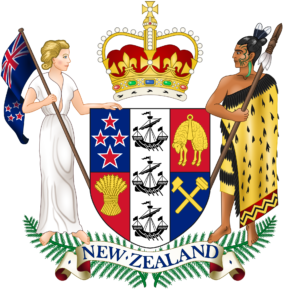Orders of chivalry
new zealand
New Zealand, described as one of the most picturesque and photogenic places on earth, is a small pacific nation composed primarily of two major land masses separated by the Cook straight and a number of smaller islands including Stewart Island. Due to its relative remoteness and being water locked, New Zealand was one of the last countries to be found and settled.
history of the nation
New Zealand is an island country in the southwestern Pacific Ocean. It consists of two main landmasses—the North Island and the South Island —and more than 700 smaller islands, covering a total area of 103,500 sq mi. New Zealand is about 1,200 mi east of Australia across the Tasman Sea and 600 mi south of the islands of New Caledonia, Fiji, and Tonga. The country’s varied topography and sharp mountain peaks, including the Southern Alps, owe much to tectonic uplift and volcanic eruptions. New Zealand’s capital city is Wellington, and its most populous city is Auckland.
New Zealand was the largest country in Polynesia when it was annexed by Great Britain in 1840. Thereafter it was successively a crown colony, a self-governing colony (1856), and a dominion (1907). By the 1920s it controlled almost all of its internal and external policies, although it did not become fully independent until 1947, when it adopted the Statute of Westminster. It is a member of the Commonwealth.
Early Settlers
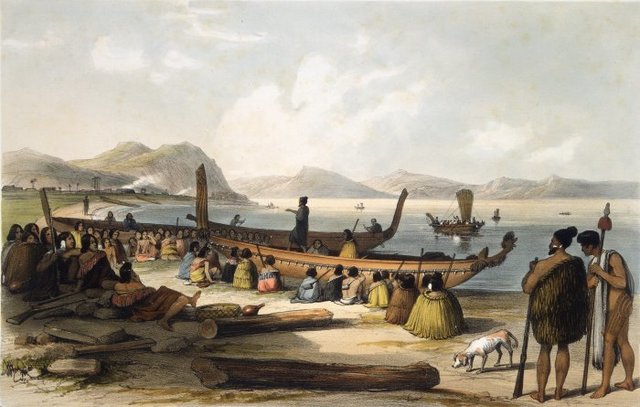
Art depicting the ancient maori people
Evidence suggests that New Zealand was first inhabited immigrants from the Polynesian Islands. The first wave of these immigrants arrived in 950 AD followed by others in 1150 and 1350. It is the travelers of 1350 who developed into the contemporary Maori. These immigrants arrived bearing their domesticated animals and plants, some of which did not survive the change of environment. The many years of isolation enabled the Maori to come up with a unique culture involving mythology, performing arts, language, and unique crafts. The 1830s saw waves of Europeans settle on the island. Most of the traditional chiefs gave up their autonomy by signing the Treaty of Waitangi in 1840 in exchange for British protection and recognition. Between 1860 and 1865, the Maori engaged the British in battles over autonomy and land rights. The Maori has been actively participating in New Zealand’s society and has implemented efforts towards preserving the rich Maori culture.
maori culture
Maori people define themselves by their iwi (tribe) and hapu (sub-tribe). Within traditional Maori culture experts in various skills arose. These included carvers, tattoo artists, healers, and builders. The Maori referred to these skilled practitioners as tohunga.One striking aspect of the Maori are their unique and beautiful tattoos. Maori tattooing is called ta moko and has traditionally been an important part of their culture. Tattoos were used to show a person’s status and rank.Every traditional Maori community has a communal area called a marae. This area contains several buildings that include a wharenui (meeting house) and wharekai (dining hall).The wharenui (meeting house) located within the marae (communal area) is the focal point for the Maori community and is where meetings and celebrations take place. The Maori historically relied on fishing as one of the main sources of their food. The Maori passed on rich and detailed history and legends orally. Society was organized around groups that traced their descent from common ancestors. Reciting whakapapa (genealogies) was an important way to communicate knowledge.
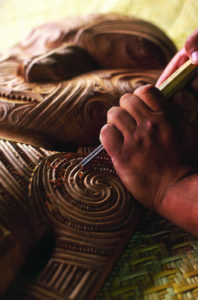
maori wood carving
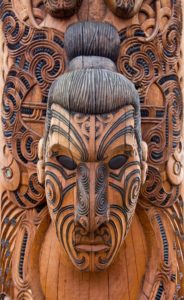
maori style carving depicting face tattoos
Maori culture is rich with stories and legends. The Maori creation story describes the world being formed by the violent separation of Ranginui, the Sky Father, and Papatuanuku, the Earth Mother, by their children. Many Maori carvings and artworks graphically depict this struggle.
Te Reo Maori is the Maori Language. Numerous places in New Zealand have names that are of Maori origin.
The Maori Haka is an ancient traditional group dance often performed on a battlefield prior to engaging the enemy or by warriors prior to heading off to battle. There are many different types of Hakas; not all centering around warfare.
Traditional Maori clothing included skirts made from flax, a common plant found on New Zealand, and elaborate cloaks for warmth and to indicate status. A cultural tradition of the Maori is a feast centering around a pit in the ground. Food would be put in ovens called hangi. Heated stones would cook the various meat and vegetables. In ancient times wars between Maori tribes was commonplace. These conflicts were most often over territory. In the past, the Maori built canoes (Waka) for fishing and traveling. These canoes ranged in size from small one man boats to large double-hulled war canoes called Waka taua which were as long as 130 feet.
Today Maori people live throughout New Zealand, and many are actively involved with keeping their culture and language alive. In recent years, the introduction of Maori language programs has revived it. At kohanga reo, preschool children are encouraged to speak in Maori. Primary and secondary schools build on this early immersion by including Maori in the curriculum. Traditional carvers also help to keep Maori culture alive by creating intricate works that pay respect to the past.
european settlers
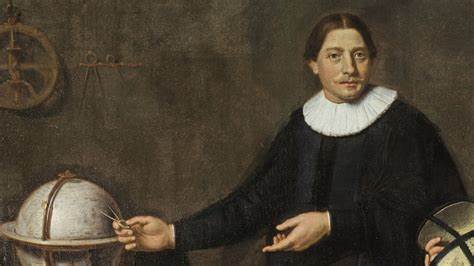
dutch explorer abel tasman
Abel Tasman discovered New Zealand in 1642. Although when he first sighted the land, he named it Staten Landt, believing it to be part of the land of that name off the coast of Argentina. When it was realized that New Zealand was not part of South America, the Dutch renamed it Nieuw Zeeland.
In 1769, English Captain James Cook arrived South Seas in search of the southern continent thought to exist in the area. It was Cook’s cabin boy, Young Nick, who actually sighted a piece of land (now called Young Nick’s Head) near Gisborne during that first voyage. Cook successfully circumnavigated and mapped the country. He led two more expeditions to New Zealand before being killed in Hawaii in 1779.
Prior to 1840, it was mainly whalers, sealers, and missionaries who came to New Zealand. These settlers had considerable contact with Māori, especially in coastal areas. Māori and Europeans traded extensively, and some Europeans lived among Māori. The contribution of guns to Māori intertribal warfare, along with European diseases, led to a steep decline in the Māori population during this time.
In 1840, the Treaty of Waitangi was signed, an agreement between the British Crown and Maori. It established British law in New Zealand and is considered New Zealand’s founding document and an important part of the country’s history. The building where the treaty was signed has been preserved and, today, the Waitangi Treaty Grounds are a popular attraction.
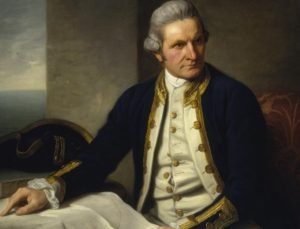
english captain james cook
culture
New Zealand’s cultural influences are predominantly European and Maori. Immigrant groups have generally tended to assimilate into the European lifestyle, although traditional customs are still followed by many Tongans, Samoans, and other Pacific peoples. Maori culture suffered greatly in the years of colonization and into the 20th century, and many Maori were torn between the pressure to assimilate and the desire to preserve their own culture. However, since the 1950s there has been a cultural renaissance, with a determined effort to preserve and revive artistic and social traditions. The culture of the pakeha (the Maori term for those of European descent) has come to incorporate many aspects of Maori culture. The biennial Te Matatini festival, first held in 1972, celebrates Maori culture, especially the traditional dance and song performances known as kapa haka. The festival is held over several days, each time in a different region of New Zealand, and culminates in the national kapa haka championship.
Sports are the main leisure-time activity of more than half the population. There is widespread participation in most major sports, particularly rugby football, which is played by both men’s and women’s teams. The inaugural World Cup of rugby, which New Zealand cohosted in 1987, was won by the country’s national team, the All Blacks. (New Zealand also hosted the seventh Rugby World Cup in 2011.) The opening of each All Black match is highlighted by the players’ performance of the haka known as “Ka Mate,” a traditional Maori chant accompanied by rhythmic movements, stamping, and fierce gestures. Notable players include Colin Meads, who participated in 55 Test matches for the All Blacks. Women’s netball has become a popular participatory and spectator sport, as has basketball.
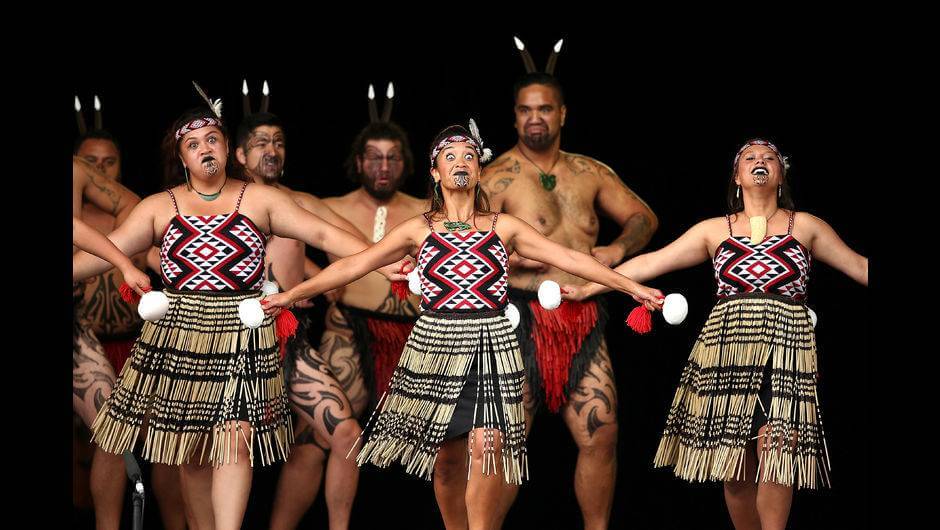
dancers performing the Traditional Haka
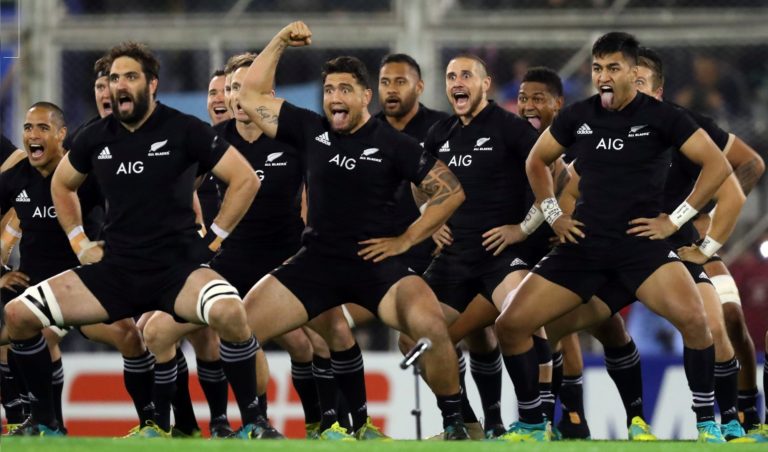
all blacks rugby team performing the haka
the commonwealth
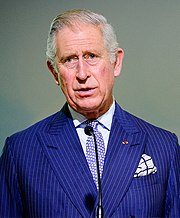
his majesty charles iii
The Commonwealth of Nations, generally known simply as the Commonwealth, is a political association of 54 member states, almost all of which are former territories of the British Empire. The chief institutions of the organization are the Commonwealth Secretariat, which focuses on intergovernmental aspects, and the Commonwealth Foundation, which focuses on non-governmental relations between member states.
The Commonwealth dates to the first half of the 20th century with the decolonization of the British Empire through increased self-governance of its territories. It was originally created as the British Commonwealth of Nations through the Balfour Declaration at the 1926 Imperial Conference and formalized by the United Kingdom through the Statute of Westminster in 1931. The current Commonwealth of Nations was formally constituted by the London Declaration in 1949, which modernized the community and established the member states as “free and equal”.
The Head of the Commonwealth is currently King Charles III. The King is the head of state of 16 member states, known as the Commonwealth realms, while 33 other members are republics and 5 others have different monarchs.
Member states have no legal obligations to one another but are connected through their use of the English language and historical ties. Their stated shared values of democracy, human rights and the rule of law are enshrined in the Commonwealth Charter and promoted by the quadrennial Commonwealth Games.
The countries of the Commonwealth cover more than 11,566,870 sq mi, equivalent to 20 per cent of the world’s land area. The total population is estimated to be 2,418,964,000 as of 2016, equivalent to nearly a third of the global population, making it the second largest intergovernmental organization by population behind the United Nations.
the prime minister

Prime minister Jacinda Ardern
Jacinda Kate Laurell Ardern is a New Zealand politician who has been serving as the 40th prime minister of New Zealand and leader of the Labour Party since 2017. First elected to the House of Representatives as a list MP in 2008, she has been the member of Parliament (MP) for Mount Albert since March 2017.
The governor general
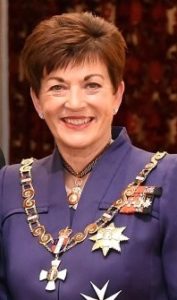
Dame Patricia Reddy
Her Excellency, the Right Honorable Dame Patricia Lee Reddy GNZM, QSO, DStJ, is a New Zealand lawyer and businesswoman serving as the governor-general of New Zealand, in office since 2016.
Prime Minister John Key advised the Queen to appoint Reddy to succeed Sir Jerry Mateparae as the Queen’s representative; Reddy was sworn in on 28 September 2016.
new zealand royal honors system
The Royal Honors System in New Zealand has evolved along with changes in the country’s constitution, from Crown Colony to Dominion, and from Dominion to a fully independent monarchy within the realm.
Between 1848 and 1996, New Zealanders were eligible to receive the British Imperial Honors. In 1975 a distinctive New Zealand honor was blended into the system. It was called The Queen’s Service Order (QSO) with an associated Queen’s Service Medal (QSM). A second distinctive honor, The Order of New Zealand (ONZ), was instituted in 1987. Since 1976, a variety of other distinctive medals were created to recognize the community as well as the military, police, fire, and prison services.
In 1995 a significant review of the system was undertaken by the Prime Minister’s Honors Advisory Committee. From the recommendations of this Committee a totally New Zealand Royal Honors System was established with the institution of The New Zealand Order of Merit on 30 May 1996 and the discontinuance of recommendations for the various British orders.
the order of new zealand
The Order of New Zealand is New Zealand’s most senior honor. The Order was instituted by Royal Warrant on Waitangi Day, 6 February 1987“to recognize outstanding service to the Crown and people of New Zealand in a civil or military capacity.”
The Order is a single, first-level Order which is modelled on the British Order of Merit (OM) and the Order of the Companions of Honor (CH). The Order of New Zealand was instituted to fill a need for regular access to a first level honor that did not confer a specific title to the recipient.
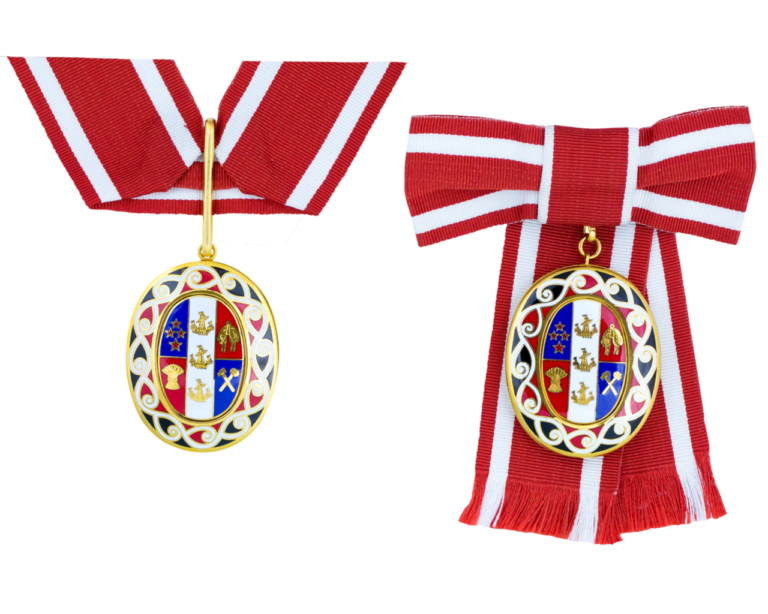
the new zealand order of merit
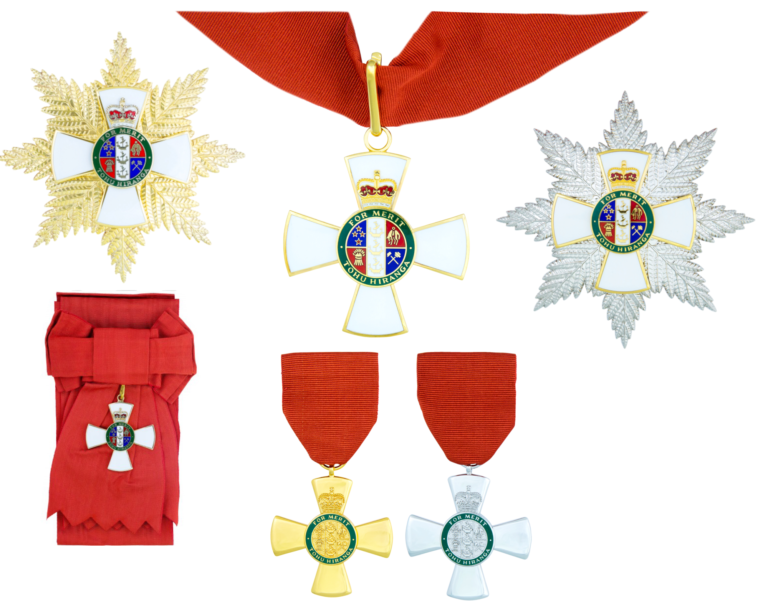
The New Zealand Order of Merit is an order of merit in New Zealand’s honors system. It was established by royal warrant on 30 May 1996 by Elizabeth II, Queen of New Zealand, “for those persons who in any field of endeavor, have rendered meritorious service to the Crown and nation or who have become distinguished by their eminence, talents, contributions or other merits”. It recognizes outstanding service to the Crown and people of New Zealand in a civil or military capacity. The New Zealand Order of Merit ranks immediately after the Order of New Zealand. There are five grades within the order: There are 5 levels within the order: Knight or Dame Grand Companion (GNZM); Knight or Dame Companion (KNZM or DNZM); Companion (CNZM); Officer (ONZM); Member (MNZM).
On 10 April 2000, The Queen had approved the discontinuation of titles (damehoods and knighthoods) within the Order. The new designations were principal companions and distinguished companions. The first appointments to the re-designated levels were made in The Queen’s Birthday Honors on 5 June 2000. On 8 March 2009, the Queen reinstated of the titles of Knight and Dame Grand Companion and Knight and Dame Companion. At that time there were 85 New Zealanders who were appointed Principal Companions and Distinguished Companions of the Order between 2000 and 2008. An opportunity was provided for them to be redesignated either a Dame or Knight Grand Companion or Dame or Knight Companion within the Order. The first appointments to the redesignated levels were made in The Queen’s Birthday Honors on 31 May 2009.
the queen's service order AND MEDAL
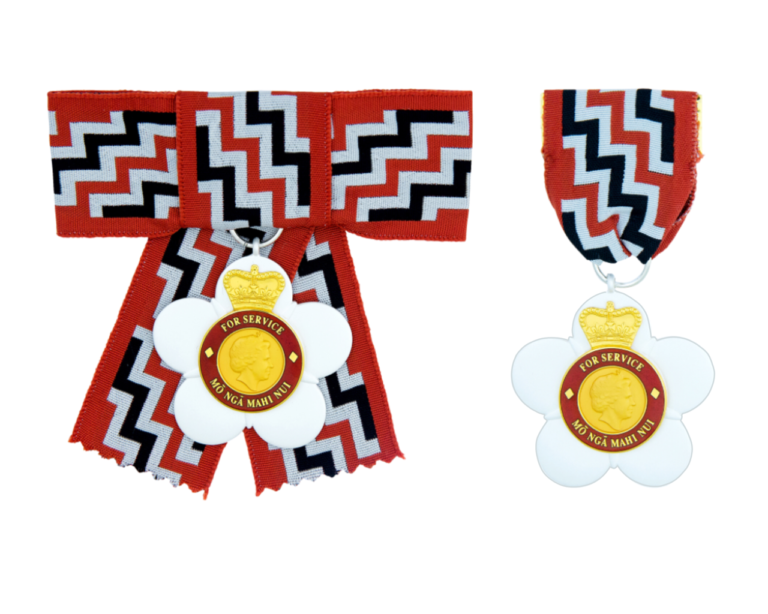
The Queen’s Service Order, established by royal warrant of Queen Elizabeth II on 13 March 1975, is awarded in recognition of “valuable voluntary service to the community or meritorious and faithful services to the Crown or similar services within the public sector, whether in elected or appointed office”. This order was created in 1974 and replaced the British Imperial Service Order.
The monarch of New Zealand is the Sovereign Head of the order and those who are appointed as members are called “Companions”. Companions are classified into the following categories: Ordinary, Extra, Additional, and Honorary. Only 50 Ordinary Companions are appointed each year, and membership is limited to citizens of New Zealand and of the Commonwealth Realms. Members of the royal family can be names as Extra Companions. Citizens of counties where the Queen is not the monarch may be appointed as Honorary Companions. Additional Companions may be appointed in honor of important royal, state, or national occasions. Companions are entitled to use the post-nominal letters “QSO”.
The Badge of the Order is based on a stylized representation of a manuka flower. It consists of five large and small stylized petals in frosted Sterling silver. The ribbon of both the QSO and QSM is identical. It has central alternating stripes of red ochre white and black in a descending step pattern from left to right with narrow red ochre edges. The design is based on the stepped Maori Poutama pattern used in Tukutuku wall panels. It represents the steps of service.
The Queen’s Service Medal, which ranks as a sixth level honor, is awarded by the government of New Zealand to recognize volunteer service to the community as well as public service of elected or appointed public office. It was established in 1975 and is related to the Queen’s Service Order. The Queen’s Service Order replaced the Imperial Service Medal as an award of New Zealand.
The Medal is round and made of Sterling silver. The effigy of The Queen on the obverse is the profile designed by Ian Rank-Broadley surrounded by the Royal styles and titles “ELIZABETH II QUEEN OF NEW ZEALAND”. The New Zealand Coat of Arms surrounded by the inscription “THE QUEEN’S SERVICE MEDAL” and “for service – MO NGA MAHI NUI” appears on the reverse. The name of the recipient is engraved on the rim of the Medal.
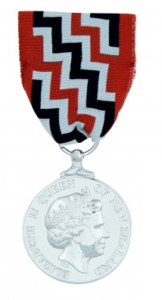
This section was produced with the assistance and permission Honours Unit, Department of the Prime Minister and Cabinet.
New Zealand is a land of great contrasts and diversity. Active volcanoes, spectacular caves, deep glacier lakes, verdant valleys, dazzling fjords, long sandy beaches, and the spectacular snowcapped peaks of the Southern Alps on the South Island—all contribute to New Zealand’s scenic beauty. That beauty, along with the mix of European and Maori cultural influences, make New Zealand an area which has something to offer everyone. Anyone interested in visiting New Zealand, is highly encouraged to visit one of the many sites promoting tourism to this unique and beautiful country. Those interested in learning more about the New Zealand Royal Honors are encouraged to visit their webpage at https://dpmc.govt.nz/our-programmes/new-zealand-royal-honours.
